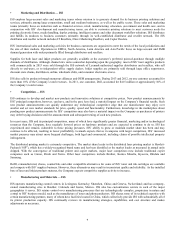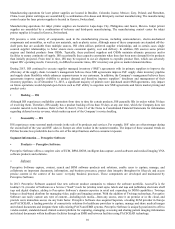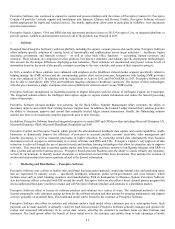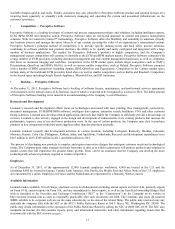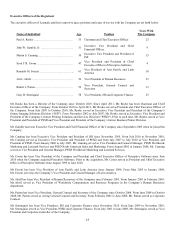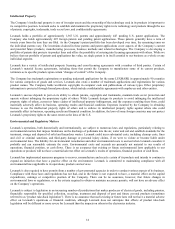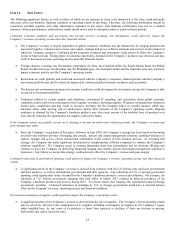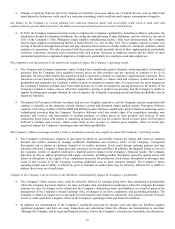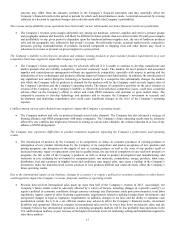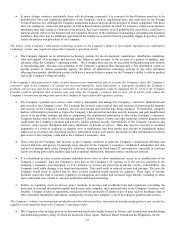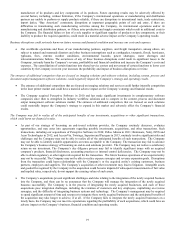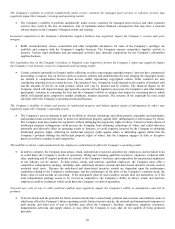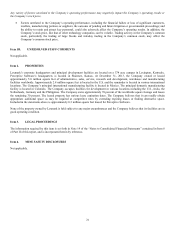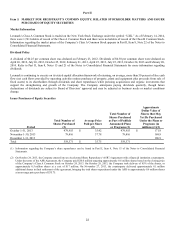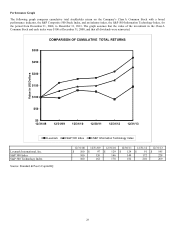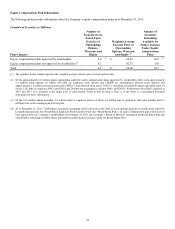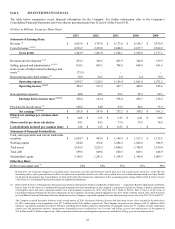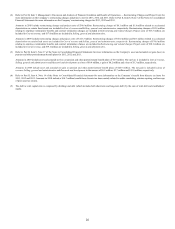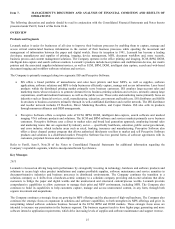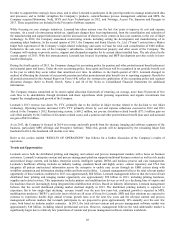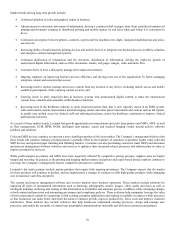Lexmark 2013 Annual Report Download - page 23
Download and view the complete annual report
Please find page 23 of the 2013 Lexmark annual report below. You can navigate through the pages in the report by either clicking on the pages listed below, or by using the keyword search tool below to find specific information within the annual report.manufacture of its products and key components of its products. Future operating results may be adversely affected by
several factors, including, without limitation, if the Company’s international operations or manufacturing and distribution
partners are unable to perform or supply products reliably, if there are disruptions in international trade, trade restrictions,
import duties, “Buy American” constraints, disruptions at important geographic points of exit and entry, if there are
difficulties in transitioning such manufacturing activities among the Company, its international operations and/or its
manufacturing and distribution partners, or if there arise production and supply constraints which result in additional costs to
the Company. The financial failure or loss of a sole supplier or significant supplier of products or key components, or their
inability to produce the required quantities, could result in a material adverse impact on the Company’s operating results.
Business disruptions could seriously harm our future revenue and financial condition and increase our costs and expenses.
Our worldwide operations and those of our manufacturing partners, suppliers, and freight transporters, among others, are
subject to natural and manmade disasters and other business interruptions such as earthquakes, tsunamis, floods, hurricanes,
typhoons, fires, extreme weather conditions, environmental hazards, power shortages, water shortages and
telecommunications failures. The occurrence of any of these business disruptions could result in significant losses to the
Company, seriously harm the Company’s revenue, profitability and financial condition and increase the Company’s costs and
expenses.. The consolidation of certain functions into shared service centers and movement of certain functions to lower cost
countries by the Company in recent year increases the probability and impact of business disruptions over time.
The entrance of additional competitors that are focused on imaging solutions and software solutions, including content, process and
document output management software solutions, could negatively impact the Company’s strategy and operating results.
The entrance of additional competitors that are focused on imaging solutions and services could further intensify competition
in the laser printer market and could have a material adverse impact on the Company’s strategy and financial results.
The Company acquired Perceptive Software in 2010 and has made significant investments in complementary software
companies since then to strengthen its industry workflow solutions and to compete in the content, process and document
output management software solutions market. The entrance of additional competitors that are focused on such solutions
could materially impact the Company’s strategy to expand in this market and adversely affect the Company’s financial
results.
The Company may fail to realize all of the anticipated benefits of any investments, acquisitions or other significant transactions,
which could harm our financial results.
As part of our strategy of becoming an end-to-end solutions provider, the Company routinely discusses, evaluates
opportunities, and may enter into agreements regarding possible investments, acquisitions, and other transactions. Such
transactions, including our acquisitions of Perceptive Software in 2010; Pallas Athena in 2011; Brainware, Nolij, ISYS and
Acuo Technologies in 2012; and AccessVia, Twistage, Saperion and Pacsgear in 2013, routinely involve significant risks and
challenges and the Company may not be able to realize all of the anticipated benefits of such transactions. The Company
may not be able to identify suitable opportunities on terms acceptable to the Company. The transaction may fail to advance
the Company’s business strategy of becoming an end-to-end solutions provider. The Company may not realize a satisfactory
return on our investment. The Company’s due diligence process may fail to identify significant issues with an acquired
company’s products, financial disclosures, accounting practices or internal control deficiencies. The Company may not be
able to obtain regulatory or other approvals required for the transaction. The future business operations of an acquired entity
may not be successful. The Company may not be able to realize expense synergies and revenue expansion goals. Disruptions
from the transaction could harm relationships with the Company’s or the acquired entity’s existing customers, business
partners, employees and suppliers. The Company’s acquisition or other investment may lead to litigation. Intangible assets
and goodwill recognized by the Company in the acquisition could become impaired if subsequent measurements of fair value
and implied value, respectively, do not support the carrying values of such assets.
The Company’s acquisitions present significant challenges and risks relating to the integration of the newly acquired business
into the Company, and there can be no assurances that the Company will manage the integration of the newly acquired
business successfully. The Company is in the process of integrating the newly acquired businesses, and each of these
acquisitions pose integration challenges, including the retention of customers and key employees, capitalizing on revenue
synergies, and the difficulty of integrating business systems and technology. The Company’s management may be required
to spend significant amount of time and resources to integrate these newly acquired businesses and the anticipated benefits of
the acquisition may take longer to achieve, if at all. If the Company fails to integrate the newly acquired businesses on a
timely basis, the Company may not meet its expectations regarding the profitability of such acquisitions, which could have an
adverse impact on the Company’s business, financial condition and operating results.
19


